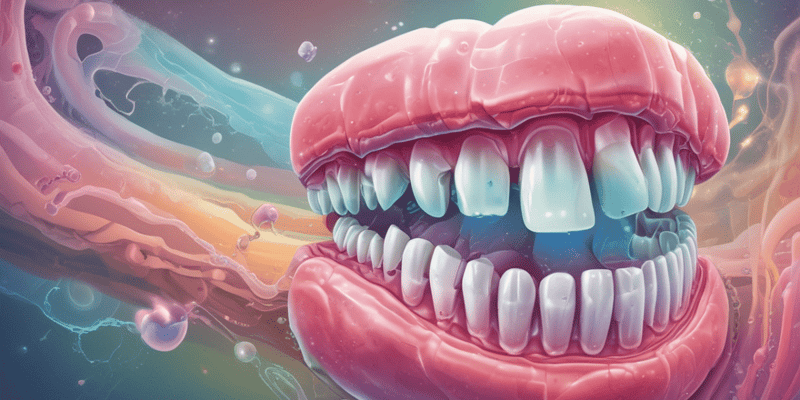Questions and Answers
What is the composition of dental plaque?
Microorganisms attached to each other and to the tooth surface, embedded, interwoven and surrounded by extracellular material of a triple abiotic origin: bacterial, saliva, and diet
Why is the term 'dental plaque' preferred over 'bacterial plaque'?
Because it includes microorganisms such as viruses, fungi, and protozoa in its content
What are the different types of dental plaque based on location?
Supragingival, subgingival, and root surfaces plaque
Where is supragingival or dentogingival plaque predominantly found?
Signup and view all the answers
What is the characteristic feature of smooth surfaces plaque?
Signup and view all the answers
Where does fissure plaque form?
Signup and view all the answers
What is the primary function of the acquired pellicle in plaque development?
Signup and view all the answers
Which type of plaque is most similar to subgingival plaque in terms of its attachment location?
Signup and view all the answers
What is the composition of mature plaque?
Signup and view all the answers
Which microorganism is found to increase in caries within mature plaque?
Signup and view all the answers
What is the first step in plaque formation according to the text?
Signup and view all the answers
Which bacteria are considered pioneer bacteria in primary colonization during plaque development?
Signup and view all the answers
Which type of plaque becomes thicker as anaerobic areas develop during secondary colonization?
Signup and view all the answers
What is the predominant mineral component in calculus or tartar formation?
Signup and view all the answers
Which microorganism is found to increase in periodontitis within mature plaque?
Signup and view all the answers
What provides positive ions (calcium, hydrogen, magnesium) for the union between acquired pellicle and negatively charged bacteria?
Signup and view all the answers
What is the main function of the floating plaque?
Signup and view all the answers
What is the primary composition of the acellular matrix in mature plaque?
Signup and view all the answers



